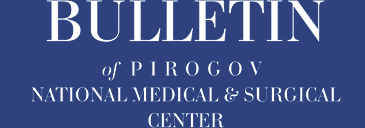Authors
Fedosov S.I.1, Onnitsev I.E.2, Fedosova K.Yu.2
1 JSC RAMI Medical Center, Saint Petersburg
2 Main Military Clinical Hospital named after academician N.N. Burdenko, Moscow
Abstract
This study is based on the results of a retrospective analysis conducted to restore the shape and size of mammary glands in patients after radical mastectomy. When comparing the three groups of patients, depending on postoperative complications, it was found that the probability of developing specific complications of mild, moderate and severe degree in the group using the method of transplantation of own adipose tissue was lower compared with the groups using the two-stage reconstruction method expander implant and TRAM flap (p>0,05).
When analyzing the results of the BREAST-Q questionnaire survey in the postoperative period, a more significant improvement in the quality of life and greater satisfaction with the result of reconstructive surgery were revealed in the group of patients with the method of transplantation of their own adipose tissue (p<0.05).
Based on the results of the study, it was concluded that the monomethod of breast reconstruction through transplantation of own adipose tissue can be considered the method of choice in patients after mastectomy.
Keywords: mastectomy, breast reconstruction, own adipose tissue.
References
1. Varghese J, Griffin M, Mosahebi A, Butler P. Systematic review of patient factors affecting adipose stem cell viability and function: implications for regenerative therapy. Stem Cell Research and Therapy. 2017; 8: 45-46. doi: 10.1186/s13287-017-0483-8.
2. Coleman SR. Structural fat grafts: The ideal filler? Clinics in Plastic Surgery. 2001; 28(1): 111-119.
3. Zhu M, Cohen SR, Hicok KC, et al. Comparison of three different fat preparation methods: gravity separation, centrifugation, and simultaneous washing with filtration in a closed system. Plastic and Reconstructive Surgery. 2013; 131(4): 873-880.
4. Turnhout AA, Fuchs S, LisabethBroné K, et al. Surgical Outcome and Cosmetic Results of Autologous Fat Grafting After Breast Conserving Surgery and Radiotherapy for Breast Cancer: A Retrospective Cohort Study of 222 Fat Grafting Sessions in 109 Patients. Aesthetic Plastic Surgery. 2017; 41(6): 1334-1341. doi: 10.1007/s00266-017-0946-4.
5. Quoc CHo, Taupin T, Guerin N, Delay E. Volumetric evaluation of fat resorption after breast lipofilling. Annales de chirurgie plastique et esthetique. 2015; 60(6): 495-499. doi: 10.1016/j.anplas.2015.06.011.
6. Rietjens M, De Lorenzi F, Rossetto F, et al. Safety of fat grafting in secondadary breast reconstruction after cancer. Journal of Plastic, Reconstructive and Aesthetic Surgery. 2011; 64(4): 341-483. doi: 10.1016/j.bjps. 2010.06.024.
7. Petit JY, Maisonneuve P, Rotmensz N, et al. Safety of Lipofilling in Patients with Breast Cancer. Clinics in Plastic Surgery. 2015; 42(3): 339-344. doi: 10.1016/j.cps.2015.03.004.
8. Pool SM. Silicone breast prostheses: A cohort study of complaints, complications, and explantations between 2003 and 2015. Journal of Plastic, Reconstructive and Aesthetic Surgery. 2018; 71(11): 1563-1569. doi: 10.1016/j.bjps.2018.07.010.
9. Lexer E. Fatty tissue transplantation. Stuttgart: Ferdinand Enke, 1919. 547 р.
10. Kanavel AR. The transplantation of free flaps of fat. Surgery, Gynecology and Obstetrics. 1916; 23: 163-176.
11. Nikpayam M, Zeino S, Uzan C, et al. How I do a secondary breast reconstruction with lipofilling. Gynécologie Obstétrique Fertilité and Sénologie. 2019; 47(11): 811-815. doi: 10.1016/j.gofs.2019.08.004.


